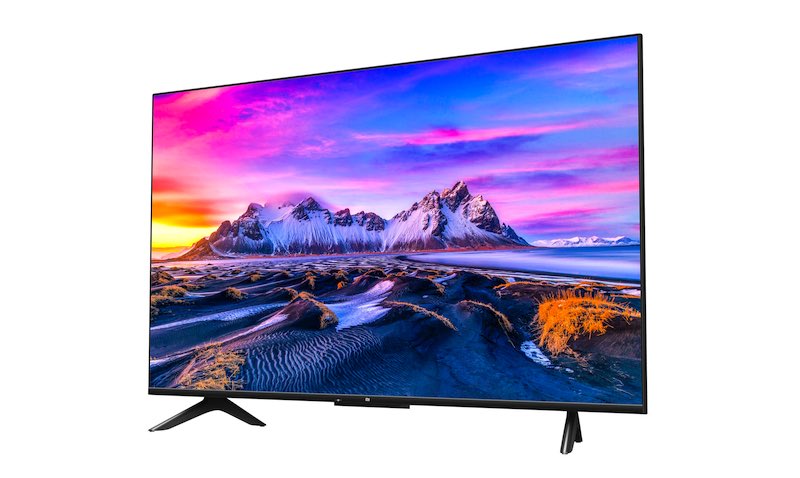A Xiaomi MI TV might be one of the best budget TVs in the market. But if you don’t tune its settings, then you might not enjoy all its features. An example of these settings is the one for adjusting picture quality.
Although these settings are important, you cannot get the best results without using the right parameters. If you are not sure about the ideal graphic settings for the MI TV, then you are in luck. After all, this article will show you how to adjust the display of your MI TV.
 Best Picture Settings for MI TVs
Best Picture Settings for MI TVs
Here are the settings for adjusting various MI TVs. But before you get started, we recommend that you consult your manual for any additional advice for tuning your TV. Besides, we also add that you use our suggestions as reference points.
For the Mi TV P1
If you want to get the best picture quality for this TV:
- Grab the Remote and press the Settings button
- Head to Device Preferences
- Scroll to Picture
- Set Picture Mode to Cinema or Sport ( if the images look orange while using Cinema Mode)
- Push the Brightness to 100
- Set Brightness to 50
- Allow Contrast to stay on 45
- Leave Saturation on 43
- Tune the Hue to 0
- Allow Sharpness on 10
- Adjust Color Temperature to Warm or Standard
- Leave Motion Smooth on OFF
Advanced Video Settings
- Set Color Space to Native
- Allow Gamma to stay on Standard
- Leave Color Tuner on default
- Tune Noise Reduction to Low
- Set Adaptive Luma Control to ON
- Enable Local Contrast Control
- Return to the previous menu and disable Ambient Light Detection
For the Mi TV 4
Here are the settings for adjusting the Xiaomi MI TV 4. You can also use these settings for the MI TV 4A Pro:
- Go to Settings – Pictures
- Go to Dynamic Backlight – OFF
- Adjust Backlight to 50
- Set Picture Mode to Custom
- Adjust Brightness to 48
- Push Contrast down to 60
- Allow Saturation to stay at 65
- Keep the Sharpness at 50
- Allow Hue to stay at 50
- Set Color Temperature to Cool
- Select Medium for DNR
If you prefer natural tones to your movie or TV shows, then use the following settings:
- Go to Settings – Pictures
- Set Picture Mode as Custom
- Scroll to Custom Settings
- Keep Brightness at 48
- Allow the Contrast to stay at 55
- Take the Saturation to 55
- Leave Sharpness at 50
- Keep the Hue at 50
- Select Standard for Color Temperature
- Leave DNR at Medium
- Set Backlight to 50
- Disable Dynamic Backlight
But if you to enhance the images from your setup box or device connected via the HDMI port of the MI TV:
- Go to Inputs
- Go to the port at which you connected the setup box or input ( e.g.HDMI 1)
- Press the Center button
- Go to Settings – Device Settings
- Set Picture Mode to Custom
- Go to Custom Settings
- Push Brightness to 48
- Leave Contrast at 60
- Adjust Saturation to 65
- Set Sharpness to 50
- Set Hue to 50
- Adjust Color Temperature to Cool
- Keep Aspect Ratio on Full Stretch
- Set DNR to Medium
- Keep Backlight to 50
- Keep HDMI Color Range Mode to Auto
- Disable Dynamic Backlight
If you are using the MI TV 4A with the Andriod 9 OS, try the following settings:
- Go to Settings-Device Preferences – Picture
- Turn Off Dynamic Backlight
- Reduce Backlight to 50
- Set Picture Mode to Custom
- Set Brightness to 48
- Adjust Contrast to 60
- Keep Saturation to 65
- Keep Sharpness to 55
For a natural feel to displayed images:
- Head to Settings – Device Preferences – Picture
- Disable Dynamic Backlight
- Set Backlight to 60
- Choose Custom
- Set Brightness to 48
- Adjust Contrast to 55
- Allow Saturation to stay at 55
- Keep your Sharpness at 50
Mi TV Adaptive Luma Control
On the Mi TV, this setting automatically adjusts the Luma level of the picture signal. If you get better images on MI TV models as the PI, you should enable this setting.
To turn on Adaptive Luma Control:
- Go to Settings – Device Preferences – Picture – Advanced Settings
- Switch
- Enable Adaptive Luma Control
How Do I Make My TV Pictures Look Better?
Asides from using the right picture settings for your TV, you can improve picture quality by aiming for a better angle. Besides, you should also go for setup boxes that support HD features.